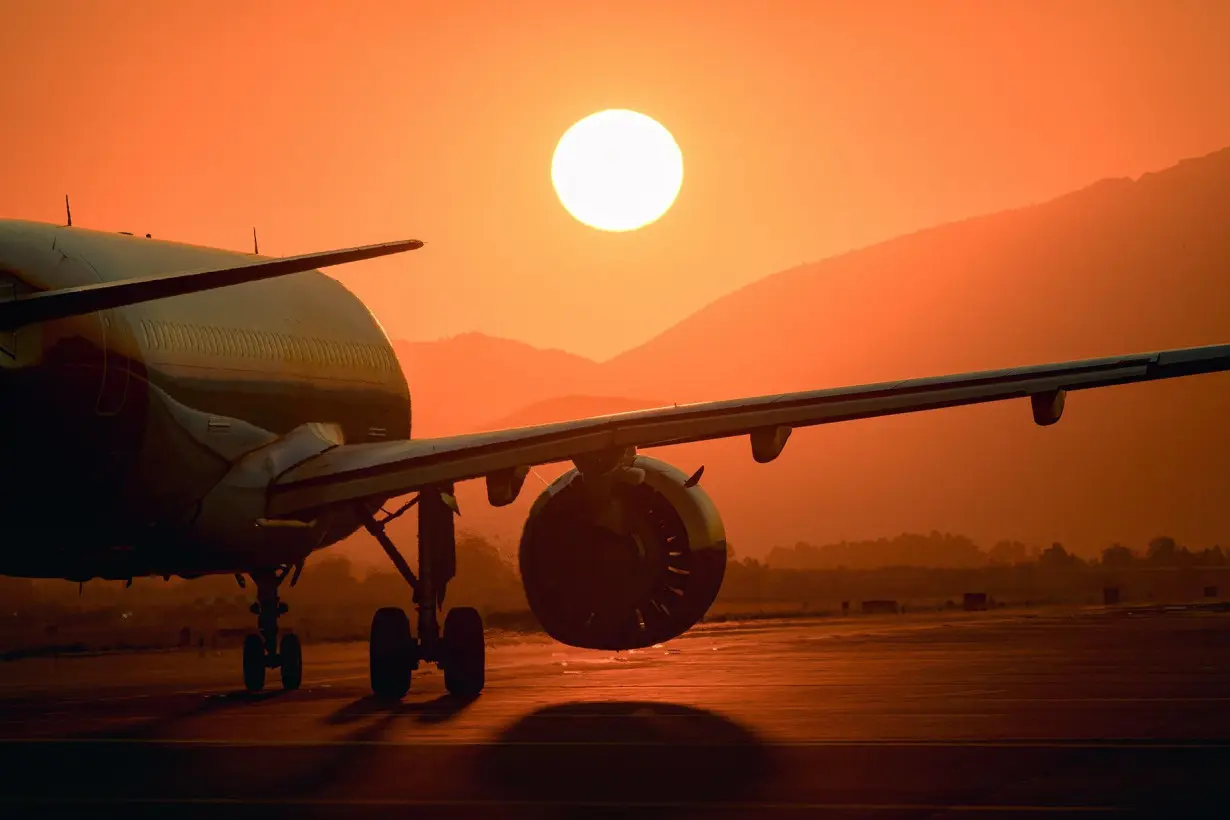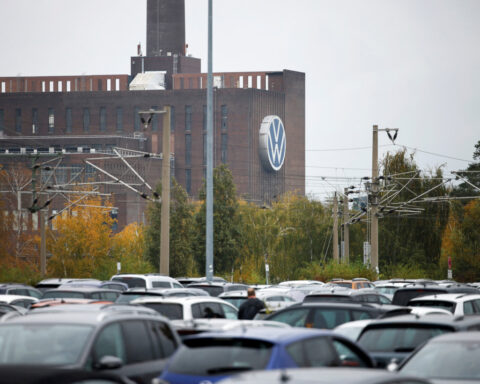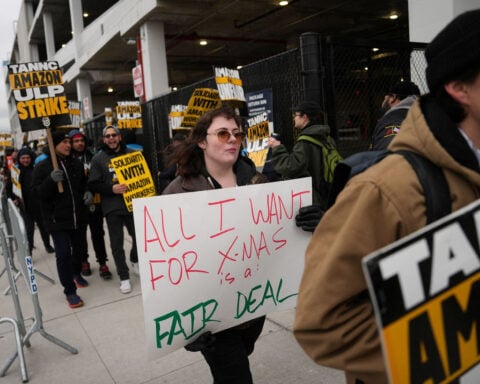(CNN) — Boarding a sweltering airplane cabin on a hot summer day has never been anyone’s favorite part of a flight, but as aviation traffic picks up — generating congestion that keeps planes on the ground for longer — and global heat records keep being broken, overheated airplane cabins could soon become a problem.
There is currently no regulatory standard for cabin temperature during boarding, but the Association of Flight Attendants (AFA) — an American group and the largest flight attendant union in the world — has since 2018 called for one in the US, where every airline deals with the issue in its own way.
In July 2023 in Las Vegas — during the hottest summer on record, according to NASA — emergency services had to attend to at least one passenger on a United flight bound for Atlanta that had been sitting on the tarmac for hours due to delays. The outside temperature reached a high of 115 degrees, and the flight was eventually canceled.
“The temperature in the cabin was in triple digits. There were several people who had to go to the hospital for overheating and get medical treatment,” says Sara Nelson, president of the AFA.
The incident might be a glimpse into things to come. When the AFA petitioned the US Secretary of Transportation to set a federal limit for cabin temperatures during boarding of 80 F (26.7 C), or 85 F if in-flight entertainment screens are switched on, it also launched an app where passengers and crews can report instances of uncomfortably hot cabins. In the five years since, it has received more than 4,000 extreme temperature reports, 80% of which are about boarding.
“Some of the airlines have internal policies that actually match or come near to the standards that we’re calling for, like, for example, Delta Air Lines,” Nelson continues. “And yet, in the July of 2023 incident, the cabin was hitting temperatures well above 100 degrees. This shows that without a federal requirement, these policies are oftentimes set aside.”
Delta said at the time that it was “looking into the circumstances that led to uncomfortable temperatures inside the cabin.”
Up to 90 degrees
According to an AFA spokesperson, among the US airlines that have policies somewhat aligned to the union’s proposed federal limit are Spirit and Hawaiian, both of which instruct their flight attendants to not let passengers board if the cabin is above 85 F. For American Airlines, that limit stretches up to 90 F, according to AFA.
Other airlines, like Alaska, United and Frontier, the AFA spokesperson said, don’t have a set temperature and leave the issue to the judgment of the captain and crew. Alaska, for example, requires a crew member to inspect the center of the cabin one hour before departure to subjectively determine if it’s too hot or too cold.
These airlines did not offer details about temperature limits in response to CNN’s queries.
It doesn’t help, the union remarks, that different aircraft have different ways to set cabin temperature, with some controlled by flight attendants and some by flight crew.
“We were actually giving out keychain thermometers to passengers and crew for a while,” Nelson says.
The reason why cabins can get hot on the ground is that the engines cannot power the on-board air conditioning systems until the plane is airborne. It is still possible to do so via the auxiliary power unit (APU) — a smaller engine in the tail of the plane whose purpose is specifically to power electric systems while on the ground — but it costs fuel, which is why most airlines avoid it.
“There is typically a lot of pressure on the pilots to limit the APU at the gate to also limit the burning of fuel if they’re waiting to take off,” Nelson says. “The pressure’s on everyone and it creates conditions that make people sick. The aircraft cabin is designed in a way that it will often heat up very quickly, and the smaller the aircraft is, the faster it heats up.”
In mid-May, the House passed a major federal aviation bill that renewed the FAA’s authority for five years and provided more than $105 billion in funding. It also called for a “a 1-year study on the health and safety impacts of unsafe cabin temperature with respect to passengers and crew members during each season.”
The study must be completed within the next two years, and results will have to be submitted to both the National Academies of Sciences and Congress, which will then decide if further action needs to be taken.
Shades down
The first line of defense against the heat while the aircraft is sitting on the ground is trying to prevent the cabin from becoming excessively hot to begin with, according to Charles Horning, a professor of aviation maintenance science at the Embry-Riddle Aeronautical University.
Many of us have been on “flights where the flight attendants have asked all the passengers to close the sliding windows before they get off the aircraft,” he says. “That’s probably the best thing that can be done to try to keep the cabin from heating up.”
There are other ways to cool down a plane; for example, by using special carts that provide air conditioning in lieu of the APU. “But again, you’re burning fuel in order to generate the compressed air that has to be used for the air conditioning system, so it’s a trade-off,” says Horning.
The other thing to work on, he adds, is to prevent aircraft from sitting on the ground for too long in the first place. “That’s a whole other issue, but once the aircraft gets in the air and you have the engines running, the air conditioning system works much more efficiently.”
CNN reached out to several airlines for comment on this story.
Delta told CNN that it focuses on keeping aircraft cabins cool during the summer “through use of ground power and air and systems on board the aircraft,” with crew working with boarding agents to ensure the cabin is comfortable before passengers get on board. Customers can help keep cabins cool by following crew member instructions to keep window shades down and air vents open while aircraft are on the ground,” the spokesperson added.
Southwest Airlines said it “adheres to all Federal Aviation Regulations concerning temperatures aboard aircraft” and manages operations by using “aircraft most capable of operating efficiently in high temperatures with heavy flight loads” in places that experience extreme heat.
“Southwest hasn’t recently experienced widespread delays or cancellations related to heat. We’re running aircraft air conditioning on the ground and asking customers to close window shades and open overhead air vents to help maintain cooler cabins,” Lynn Lunsford, SWA spokesman, said in an email to CNN.
Lunsford said Southwest provides water, ice and frequent breaks in air-conditioned areas to employees and encourages them to take measures to stay hydrated and as cool and protected from the sun as possible. The airline also trains employees to look out for signs of heat-related illness.
Spirit, Hawaiian, Frontier, JetBlue and United did not respond to a request for comment on their cabin temperature policies. American and Alaska responded to the request but did not provide comment.
A balancing act
Airlines for America, a trade association that represents major North American airlines, did not directly answer a CNN question on whether it is in favor of a federal mandate on cabin temperature. However, its spokesperson Hannah Walden said that “the safety of all passengers, flight and ground crews is always the US airline industry’s top priority” and that “extreme heat impacts on commercial aircraft operations are rare given that aircraft are designed and certified to safely operate in a wide range of low and high temperatures.”
Hassan Shahidi, president of the Flight Safety Foundation – an international non-profit organization that champions the cause of aviation safety – says that implementing international regulations and standards for cabin temperatures must take multiple issues into consideration.
“Airlines must balance fuel efficiency, greenhouse gas emissions, and the technological limitations of current aircraft cooling systems,” he says. “Additionally, setting a uniform temperature standard can be complicated due to varying climates at different airports and the diverse types of aircraft in operation.”
He adds that running APUs when aircraft are on the ground may be constrained by environmental regulations in different regions around the world: “We urge industry stakeholders to share data on cabin temperature events and best practices they use to keep temperatures down. We support a comprehensive study on this topic.”
The-CNN-Wire
™ & © 2024 Cable News Network, Inc., a Warner Bros. Discovery Company. All rights reserved.

 Why did at least 67 people die in Christmas charity stampedes in struggling Nigeria?
Why did at least 67 people die in Christmas charity stampedes in struggling Nigeria?
 When 2025 arrives, so will the end of the amateur athlete in college sports
When 2025 arrives, so will the end of the amateur athlete in college sports
 VW managers to get 10% pay cut in plan to slash bonuses, German newspaper reports
VW managers to get 10% pay cut in plan to slash bonuses, German newspaper reports
 Destructive Cyclone Chido unearths a rift between locals and migrants in France's Mayotte
Destructive Cyclone Chido unearths a rift between locals and migrants in France's Mayotte
 Here are 12 well-known companies that went bankrupt in 2024
Here are 12 well-known companies that went bankrupt in 2024
 College playoffs looks for good matchups after snoozy first round of blowouts
College playoffs looks for good matchups after snoozy first round of blowouts
 Start your week smart: Government shutdown averted, German market attack, US Navy pilots, Texas mall crash, sleep apnea
Start your week smart: Government shutdown averted, German market attack, US Navy pilots, Texas mall crash, sleep apnea








